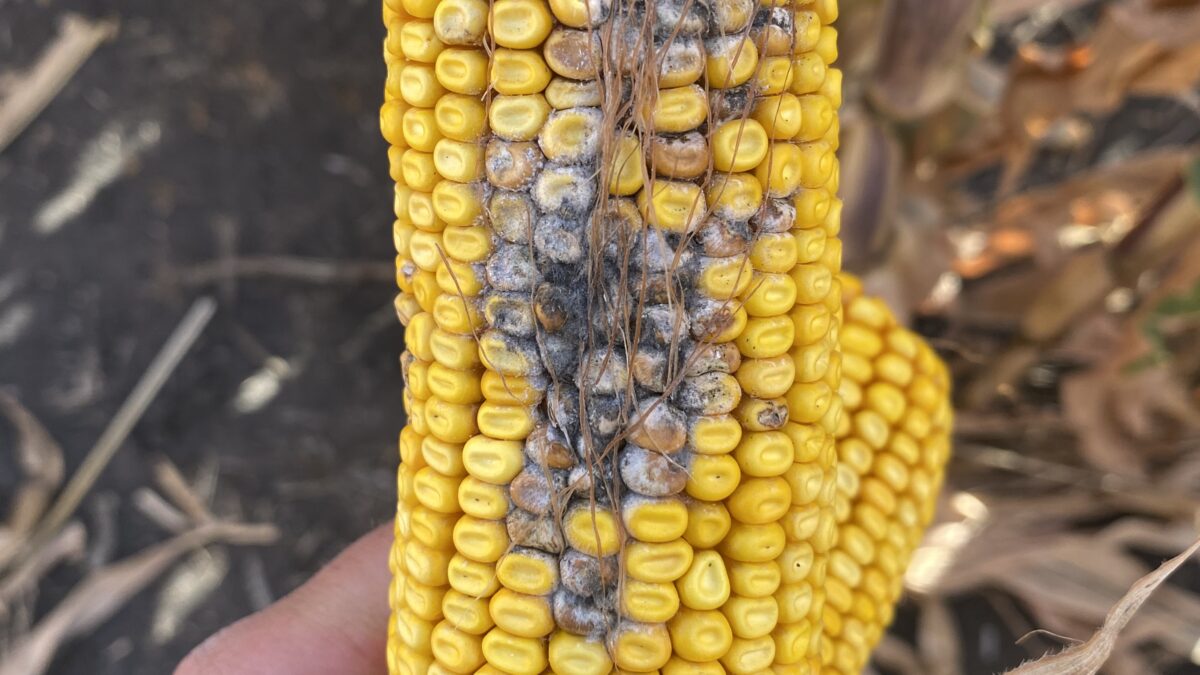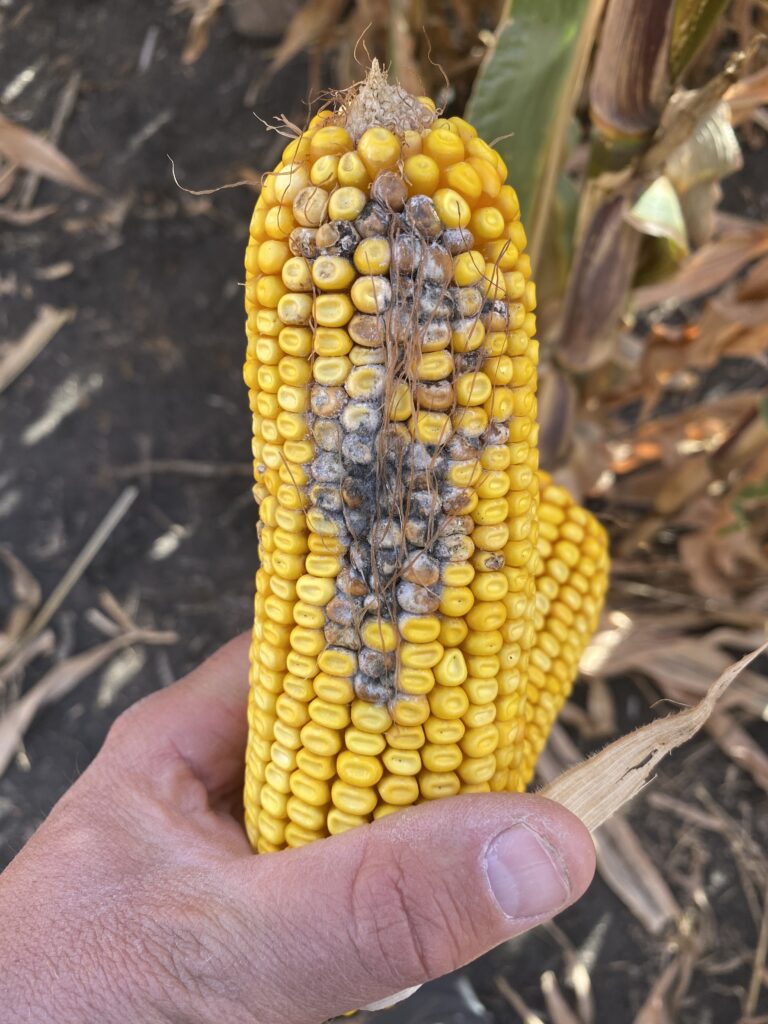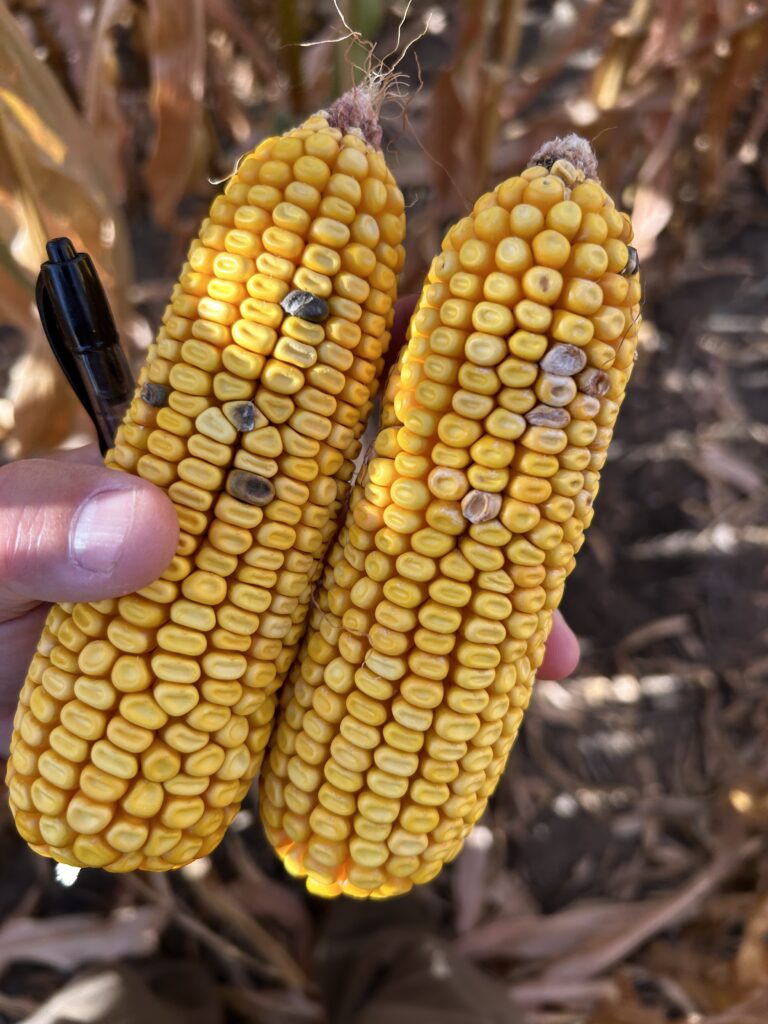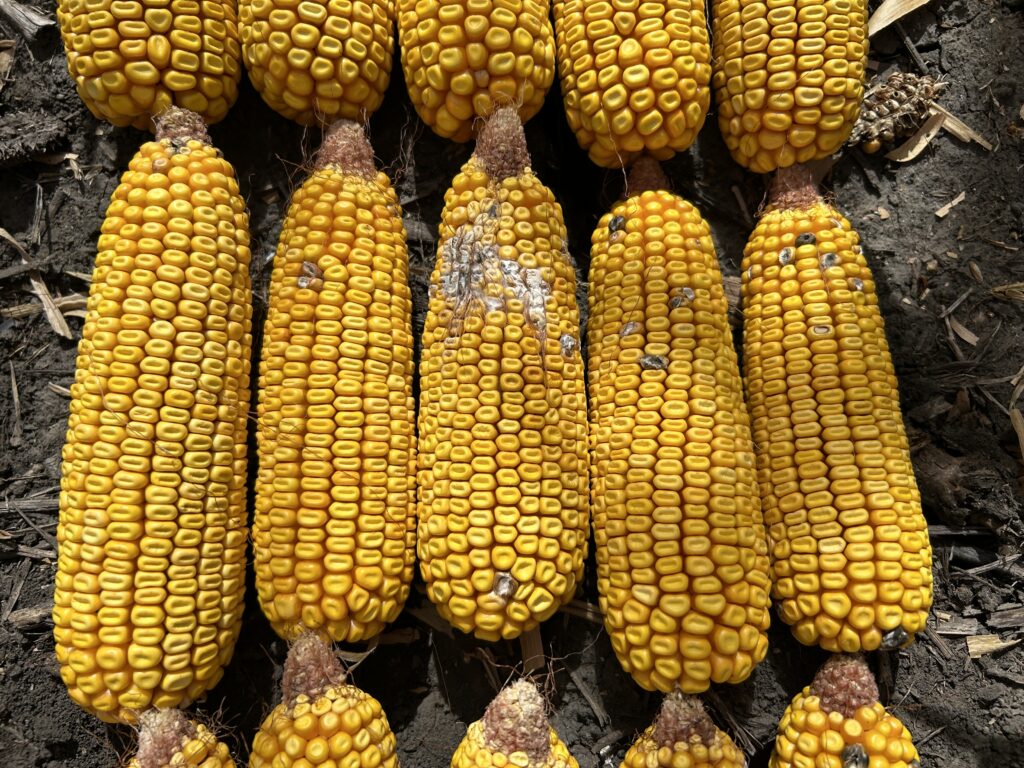Fusarium Ear Rot: More Than Normal In ’24?

Fusarium ear rot is a disease we encounter every year—it’s actually the most common disease affecting corn ears annually.
This disease typically overwinters on corn residue or grass and appears on kernels that may e gray, tan, brown, pink or salmon colored.
What stood out in 2024 was the pattern of scattered rotted kernels on the ear, rather than the usual damage caused by birds or hail. Most of the time, fusarium enters from the tip of the ear, where birds or insects can easily cause damage, allowing the infection to spread downward.
However, notice in the latter two photos how, in 2024, individual kernels were infected across the ear rather than the whole ear being affected. Under these conditions, spores can travel down the pollen tube and infect individual kernels.


Key Management Strategies
1. Hybrid selection: While choosing hybrids with disease tolerance can be a management strategy, most genetics companies have already selected for hybrids with better fusarium resistance. Therefore, hybrid selection offers limited additional protection.
2. Insect protection: Using traits like Bt can help reduce insect damage, which is one of the main entry points for fusarium infection.
3. Tillage: Managing residue through tillage is an effective way to reduce overwintering fusarium bodies and lower the risk of infection in the following year.











